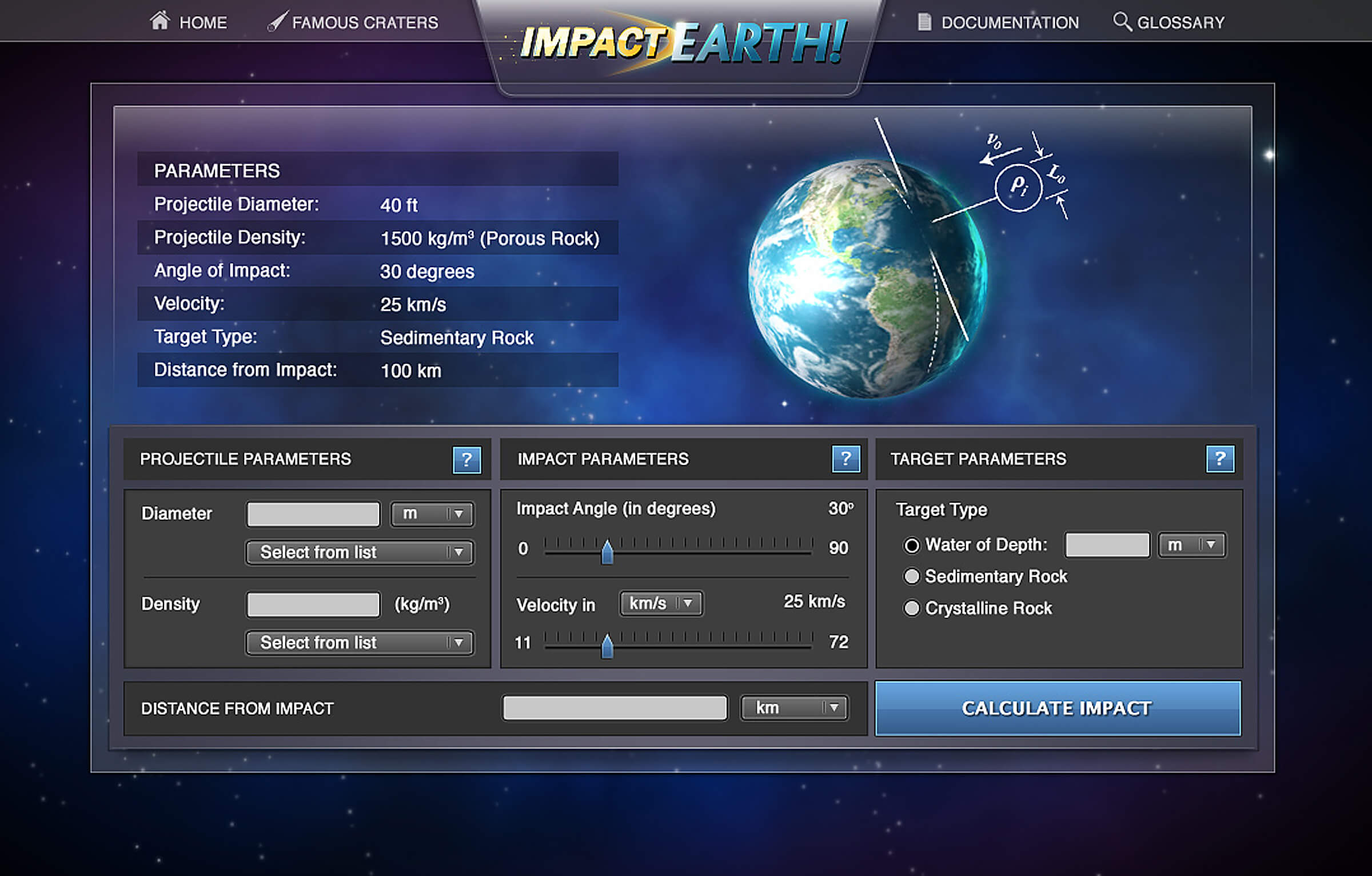SCIENCE
Purdue unveils 'Impact: Earth!' asteroid impact effects calculator - page 2
Article Index
''Fairly large events happen about once a century,'' Melosh said. ''The biggest threat in our near future is the asteroid Apophis, which has a small chance of striking the Earth in 2036. It is about one-third of a mile in diameter, and the calculator will tell what will happen if it should fall in your backyard.''
Users first enter a few parameters such as the diameter of the impact object, its density, velocity, angle of entry and where it will hit the Earth. The site then estimates the consequences of its impact, including the atmospheric blast wave, ground shaking, size of tsunami generated, fireball expansion, distribution of debris and size of the crater produced. The calculator is available at http://www.purdue.edu/impactearth

The parameters screen of the "Impact: Earth!" website allows users to input the diameter and density of the projectile, the impact angle and velocity, and whether the projectile will hit water or rock. (Information Technology at Purdue image/Michele Rund)
Massive asteroids, like the 9-mile-wide Chicxulub that killed the dinosaurs 65 million years ago, are very rare, but smaller and more common asteroids have left craters that remain today. For instance, Arizona's famous Barringer Crater - nearly a mile wide - is evidence of an impact 50,000 years ago from an asteroid estimated to be 164 feet in diameter and composed of nickel and iron.
According to the impact calculator, if an asteroid of similar composition but twice as large hit about 20 miles outside of Chicago, the impact energy would be equivalent to about 97 megatons of TNT. The resulting crater would be almost two miles wide and the impact would ignite a fireball with a one-mile radius. A magnitude 6 earthquake would shake the city approximately six seconds after impact, the air blast would shatter windows, and the Windy City would be coated in a fine dust of ejecta. The site states that impacts of this size occur roughly once every 15,000 years.
"Impact: Earth" is a more visual and user-friendly update to an impact calculator Melosh created with Robert Marcus and Gareth Collins about eight years ago while at the University of Arizona. Melosh and Collins collaborated with Information Technology at Purdue (ITaP) to update the program and create a graphic interface to make the site easier and more fun to use, he said.
''There were a lot of requests for calculations of tsunamis that would be produced from an ocean impact, and we've added that,'' said Collins, who is a natural environment research council fellow at Imperial College London. ''In addition, the program now visually illustrates the information the user enters, and we plan to connect the program with GoogleEarth to show a map of the effects.''
